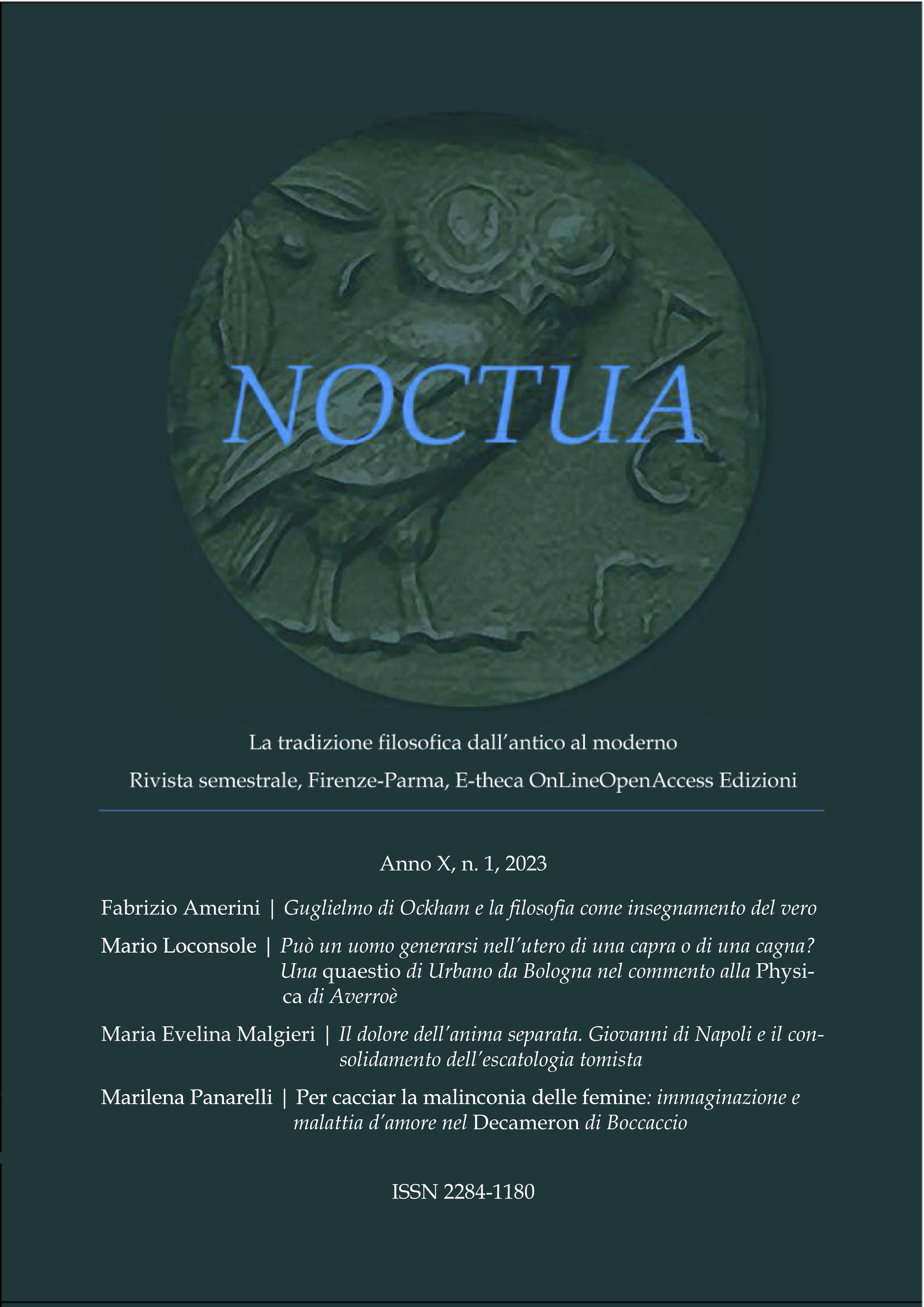Per cacciar la malinconia delle femine: immaginazione e malattia d’amore nel Decameron di Boccaccio
DOI:
https://doi.org/10.14640/NoctuaX4Parole chiave:
melancholy, lovesickness, imagination, Decameron, history of medicineAbstract
The conceptions of lovesickness and of its remedies that emerge in the Decameron result from a medical tradition that in previous centuries was assimilated by the Latin culture. The case of the Decameron is particularly interesting because this work was composed during the Black Death epidemic, between 1348 and 1354. Boccaccio’s Decameron seems to be situated in a tension between two diseases: the black plague, from which the brigata tries to escape, and lovesickness. It is quite significant that Boccaccio dedicated his work to women who love and need the comfort of literature, thereby addressing a new ideal of noble women, not based on their wealth, but on their intelligence and sensitivity. Women are often victims of their melancholy, because they have no opportunity to distract themselves, being confined to the private space of their rooms. Boccaccio describes women as being subject to passion and illness, so that the lovesickness cases described in the Decameron strongly allude to the discrimination of women and to the oppression they had to endure. An explicative example that testifies to the preeminent role that the medical culture played is Decameron X, 7, in which Lisa, the daughter of an apothecary, strangely cannot be healed by pharmacological remedies that her father knows, and not a single physician can help to heal her lovesickness. The case of Lisa can be interpreted as an exemplum: a woman afflicted by the same sickness as Lisa could understand how to behave by means of reading of this novella. Moreover, this paper will demonstrate that a useful outline of Lisa’s symptomatology can be found in Dino del Garbo’s commentary on Guido Cavalcanti’s poem Donna me prega.
##submission.downloads##
Pubblicato
Fascicolo
Sezione
Licenza
Noctua pubblica contributi Diamond Open Access secondo i termini della licenza CC BY / Noctua publishes Diamond Open Access contributions under the terms of the CC BY license.







